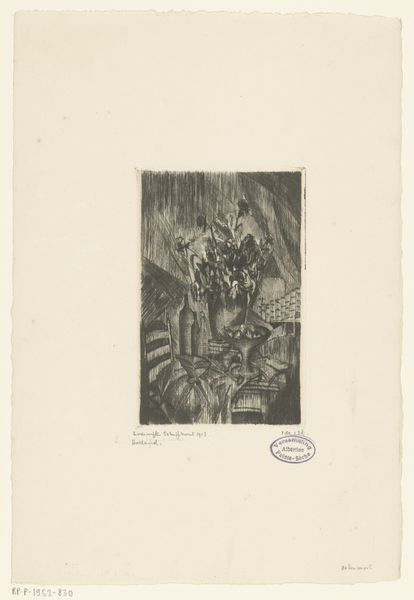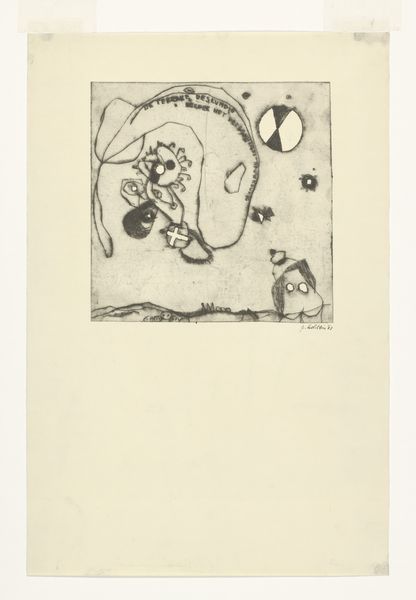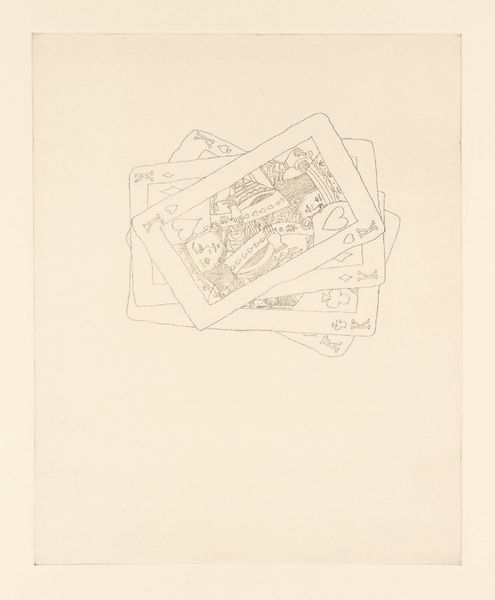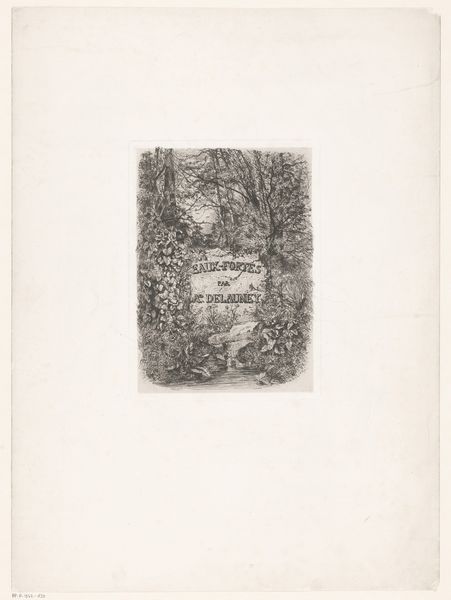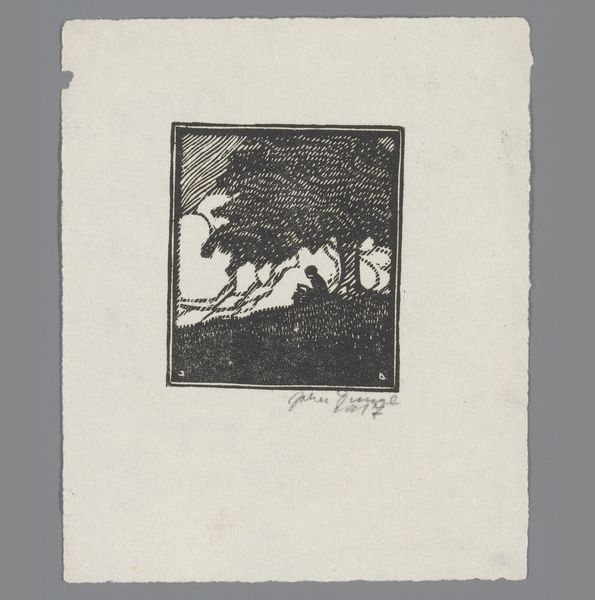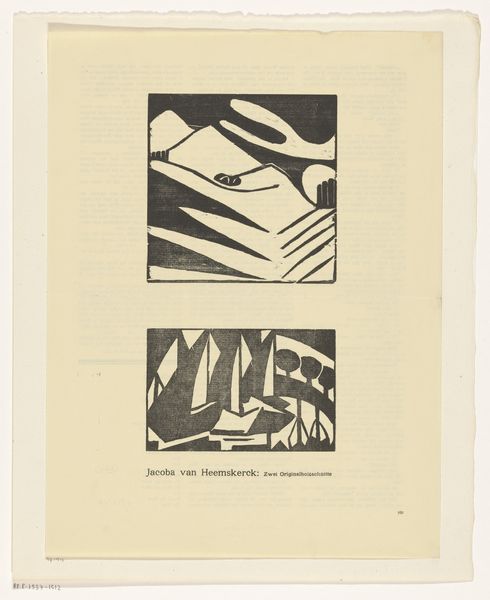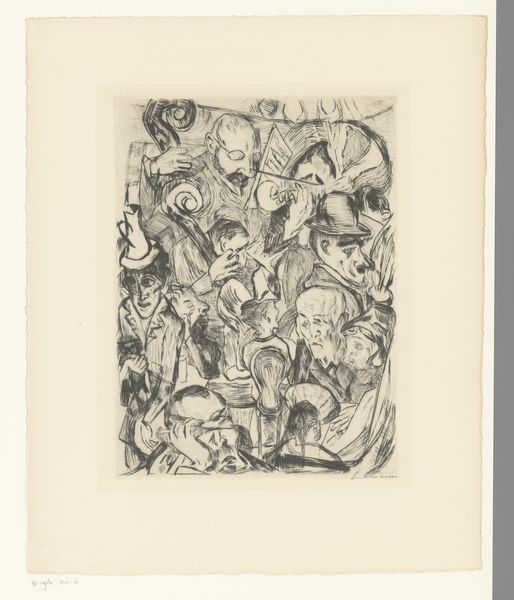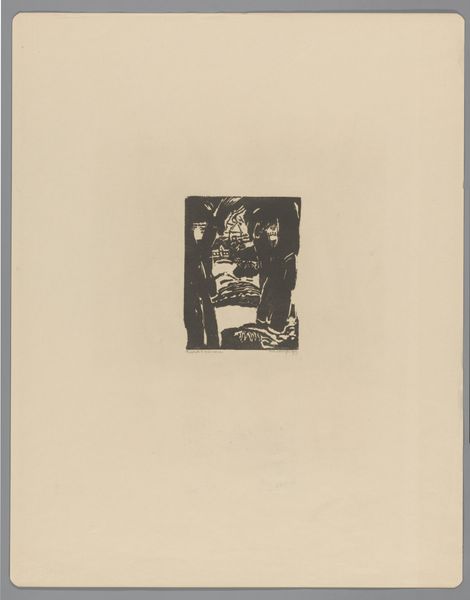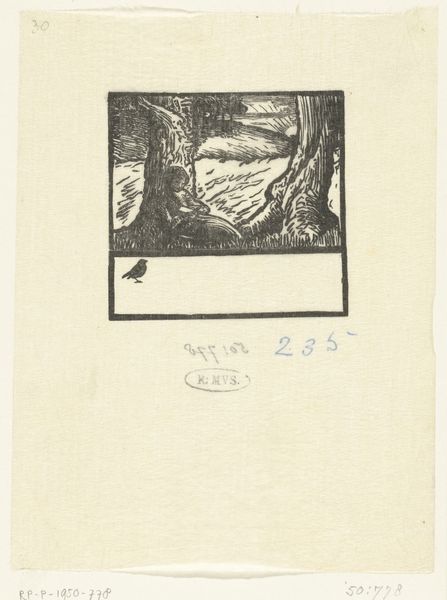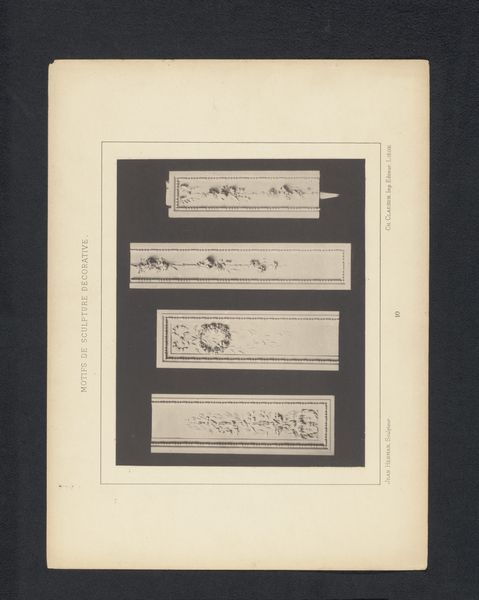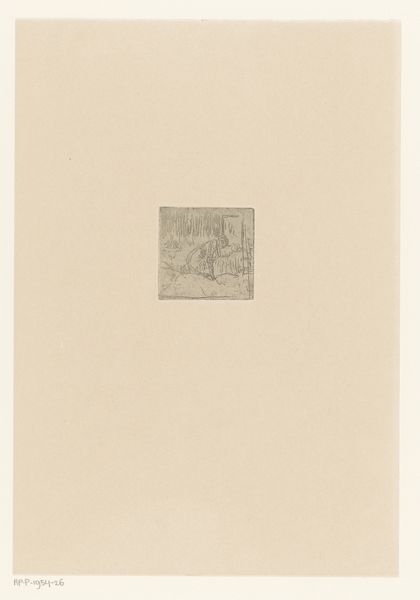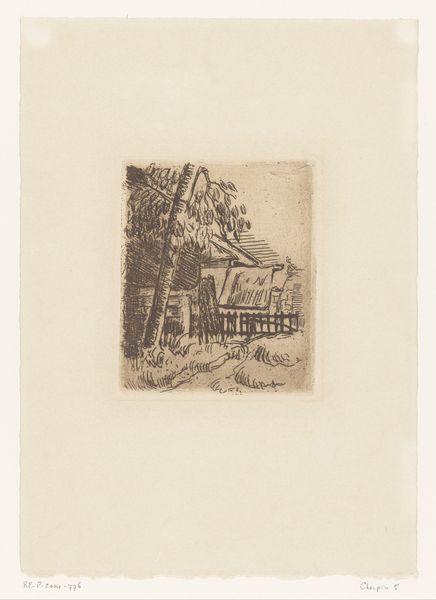
drawing, print, paper, ink
#
drawing
# print
#
landscape
#
paper
#
ink
Dimensions: height 85 mm, width 65 mm
Copyright: Rijks Museum: Open Domain
Curator: This print, titled "Ex libris van Alexis Kahl," was created in 1913 by Lodewijk Schelfhout, employing ink on paper. It's currently housed here at the Rijksmuseum. Editor: It has a distinctly vintage feel, like an old stamp. It's small, obviously, given its purpose as a bookplate. The use of ink creates a sense of fine detail, though the compositions within the four quadrants are quite bold. Curator: Bookplates are fascinating cultural artifacts. They speak volumes about the collector's identity and values, offering a glimpse into their personal library and intellectual pursuits. Examining the imagery, we see references to literature and music. It suggests Kahl had diverse artistic tastes, possibly appreciated Romanticism? Editor: Precisely! Look at the top left quadrant: “Dichterliebe,” R. Schumann. That's a clear reference to German Romantic poetry and song cycles, compositions often deeply tied to notions of love, loss, and nature. Curator: Then, opposite it in the lower right, a connection to "Gösta Berling" by Selma Lagerlöf, the first woman to win the Nobel Prize in Literature. Her work frequently investigated the marginalized and forgotten voices of Swedish society. This piece really seems like a declaration of his alignment to intellectual taste and political engagement. Editor: I find it quite potent in this particular historical moment, especially given its medium as print, a material form that lends itself well to reproduction, circulation, and wider dissemination of imagery. So what does it mean that the individual selected these stories, these specific artistic positions and aligns it as a part of the makeup of their identity? The selected artists were known for challenging traditional values through art. It’s possible Kahl self-identified with those positions and sought to project those values. Curator: Absolutely, it serves as a subtle form of self-promotion, positioning himself among progressive and intellectual circles by publicly claiming shared ground. Editor: This ex libris really illuminates how individuals, then as now, construct and perform their identities through art and cultural artifacts. I find these historical echoes incredibly pertinent. Curator: A reminder that art and identity have always been intertwined and actively negotiated, not static labels but ever evolving assertions of self within a societal framework.
Comments
No comments
Be the first to comment and join the conversation on the ultimate creative platform.
